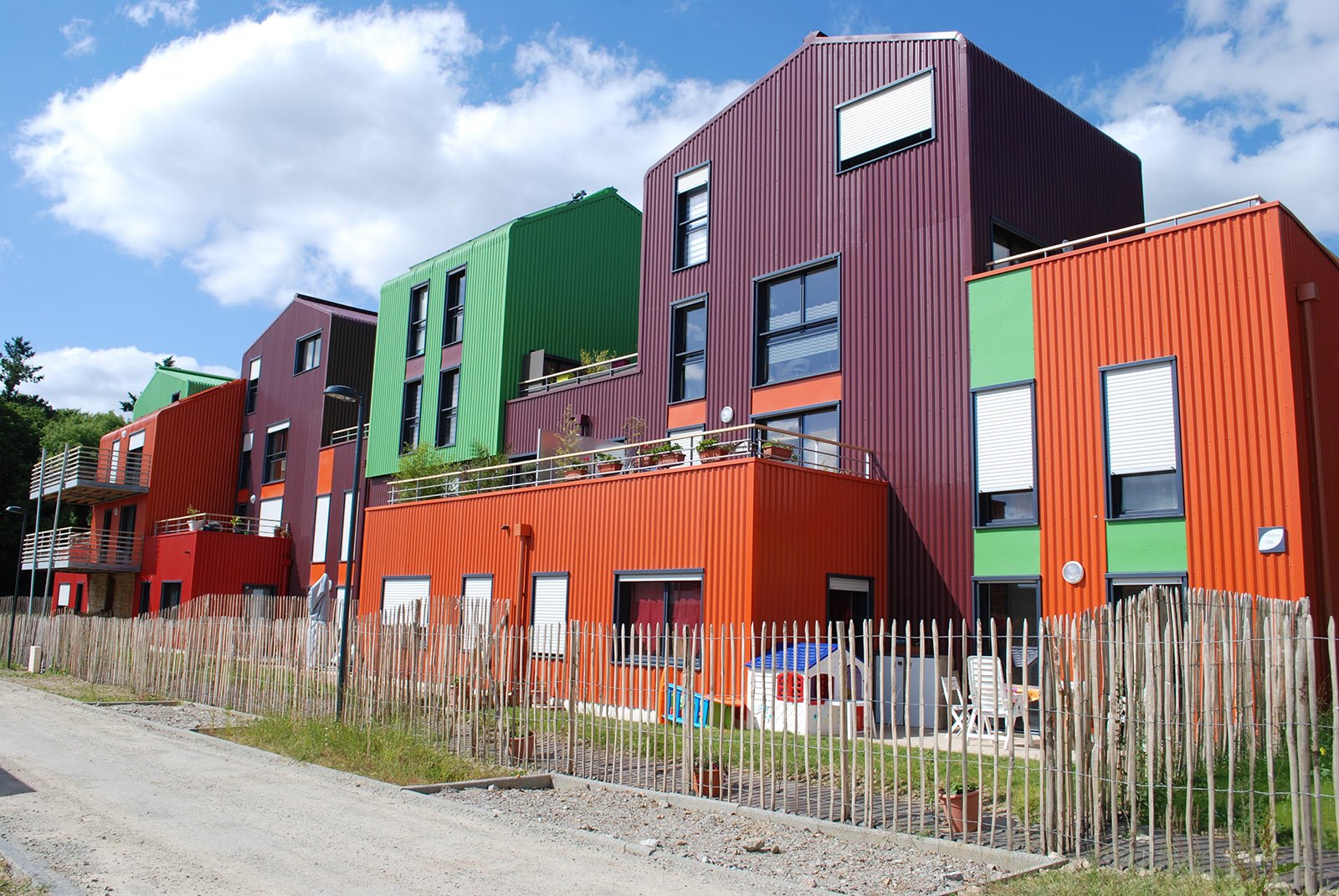
About Cohousing
While intentional communities are not new to this part of the world, the cohousing movement is a more recent expression of community living that emerged out of Denmark in the early 1960s.
Cohousing creates neighbourhoods that combine the autonomy of private dwellings with the advantages of shared resources and community living.
Residents usually own their individual homes, which are clustered around a “common house” with shared amenities. These amenities may include a kitchen and dining room, children’s playroom, workshops, guest rooms, home office support, arts and crafts area, laundry and more. Each home is self-sufficient with a complete kitchen, but resident-cooked dinners are often available at the common house for those who wish to participate.
Cohousing residents participate in the planning, design, ongoing management and maintenance of their community, meeting frequently to address each of these processes.
Cohousing neighbourhoods tend to offer environmentally sensitive design with a pedestrian orientation. They typically range from 10-35 households emphasizing a multi-generational mix of singles, couples, families with children, and elders.
Cohousing groups are based in democratic principles that espouse no ideology other than the desire for a more practical and social home environment.
Cohousing provides personal privacy combined with the benefits of living in a community where people know and interact with their neighbours. It’s about living in a way that’s responsive to a world that has changed dramatically in the last fifty years; a world in which the home life has changed, women are integral in the labour force, resource limitations and environmental concerns are on the rise, and many people feel over extended. Cohousing offers hope in our often dissociated society. Through cohousing, we can build a better place to live, a place where we know our neighbours, a place where we can enjoy a rich sense of community and contribute to a more sustainable world.
from https://cohousing.ca/about-cohousing/what-is-cohousing
As one arm of the global cooperative movement, co-op housing has roots going back to the late 1800’s in Europe. This movement blossomed in Canada largely in the 1970’s and 80’s due to Canadian Mortgage and Housing Corporation support for new co-op housing development.
The majority of housing co-ops in Canada are “non-equity” co-ops: if a member leaves the co-op, they receive back their membership share (i.e. $1000) and the housing unit returns to the co-op to be provided to another family or individual. These co-ops exist to provide secure, affordable housing to their members and are owned and managed by the members themselves. Members pay a monthly housing fee towards the on-going maintenance, collective mortgage and operating costs of the cooperative.
Charles Darrow Co-operative Housing - York Region, ON
A smaller number of housing co-ops are “equity” co-ops in which a member is able to accumulate equity and sell their unit back to the cooperative or to an approved new member upon departure. These types of housing co-ops are sometime referred to as “strata cooperatives” as they share much common ground with a typical strata development. Blueberry Commons is an “equity co-op.”
In both cases, the co-op is incorporated under the Cooperatives Act which provides a framework for how the co-op functions and how governance is undertaken. Like all co-ops, housing co-ops adhere to the seven core cooperative principles:
Open and voluntary membership
Democratic member control
Member economic participation
Autonomy and independence
Education and training for members
Cooperation with other cooperatives
Concern for the community
We have chosen the legal structure of an equity cooperative for Blueberry Commons (as opposed to a strata or corporation) for several important reasons:
We resonate more with coop values and principles than with those of other legal structures.
A cooperative structure allows us the ability to limit the sale of coop housing units to approved members while a strata does not.
A coop structure is very amenable to other activities beyond housing such as business activities (worker cooperatives), and collective purchasing (consumer cooperatives).
It is exciting to be part of a world wide social movement of folks like us trying to take back control of their local economies through the cooperative sector.

In Canada there are currently 17 completed cohousing projects (12 in BC alone!) and more than 22 in various stages of formation. The Canadian Cohousing Network is an umbrella organization for all of these communities.










